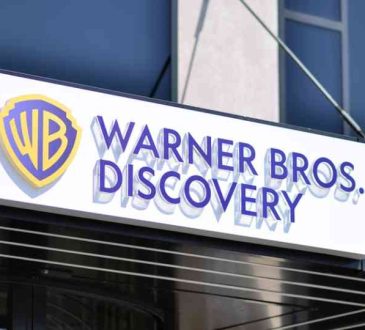Beyond the Transaction: How to Make Business Shifts Successful

Lots of companies move from private to public and public to private. Consider this: Dealogic reports there were 175 Initial Public Offerings (IPOs) in 2019, while 47 firms were taken private. And deals involving public companies being taken private by domestic private equity sponsors increased more than 27 percent over 2018.
I’ve been a CFO at companies that have done both. I collaborated with Staples’ board to drive the 2017 sale to Sycamore Partners, earning a 22 percent shareholder premium. And last year I partnered with the CEO and Board to lead the spin-off and merger of two private animal health technology firms, resulting in a newly formed $4 billion public company called Covetrus.
There is lots of information about the regulatory, transactional and financial elements of making these business shifts. Yet much less about the operational and cultural aspects. While the mechanics of the transaction must be managed well, it’s equally important to lead the intangibles.
Whether you’re working with a team to take a company public or private, here are five things that will help ensure a positive outcome.
How to Make the Business Shift Successful
Form Your Core Team – A decision to go public or private has personal and game-changing strategic business implications. Starting small is important to ensure trust and total transparency within the deliberation team. The initial group generally includes the CEO, CFO, Board and a few strategic members of management. Often a trusted investment banker and/or legal counsel participate as well.
Team members must commit to mutual respect, confidentiality, and a willingness to listen, debate and manage conflict. Once a decision is made, the team typically expands to include critical players such as Financial Planning and Analysis, Tax, Government Relations and Communications. Keeping close-knit remains key.
Begin with the End in Mind – Stakes are high when you change the company structure. The C-Suite (and employees at all levels) can lose their jobs and/or make a lot of money. The Board can be sued. Unfounded rumors can drive employee distraction and turnover. A critical step: Ensure your core team agrees on the goal, based on what the business needs and how the change will benefit shareholders or investors. Engage your Board and/or PE firm to ensure alignment.
Then make the goal visible and bring discussions back to it. Repeatedly.
Example: In the eyes of Staples’ public investors, major retail pressure had overshadowed the true growth engine of our B2B delivery segment. Committed to doing what was best for our business, our CEO and I met with select PE firms to learn from their unbiased outside perspective. Their input helped shape our goal to de-list Staples, reinforcing our primary growth opportunity via a B2B delivery model. We kept that goal front and center for our team – especially when emotions ran high.
Create Clear Accountability – So you have your core team and a shared goal. Now you need clear swim lanes and structure to ensure you execute your plan. It starts with your board as the key decision-making body. Management views are critical and provide facts and data, but the board must be actively at the table. Given the complexity and time involved, special committees might be formed with board, key management and third-party members.
Recommendations and decisions often need to happen quickly, making the board committee format very effective. The committees go deep in areas such as Negotiations, Financing, Communications, and Compensation, bringing recommendations to the core team and board. This decision-making framework enables everyone to play their position with checks and balances to mitigate risk.
Play Chess Not Checkers – Changing business structures is a messy business. You need to anticipate challenges and think two-three moves ahead. What roadblocks are likely to surface? What relationships do you need to forge to help you remove them? Think these through with your Board, CEO and CFO and ensure 100% commitment to key decisions – they must champion the change.
Another point: When you engage investment bankers and outside lawyers, ensure they have mutual trust – not only with your firm, but with each other. Absent that, outside firms may try to “outsmart” each other. That distraction wastes time and energy.
As you navigate the transaction, another thing to anticipate and manage is emotions. Recognizing the personal impact the structural change may have on members of the Core Team, some may try to steer decisions for their benefit. On many occasions, I or my CEO had to pull someone aside for a 1:1 discussion about what was driving their perspective, bringing them back to our shared goal for the firm, our investors and/or shareholders.
Think WIIFS – What’s In It for Stakeholders – Changing your business model has a broad impact beyond the Board, stockholders and investors. It will affect employees, customers and suppliers and, depending on your business – union leaders, retailers, franchisees or other groups. Think through the impact on each stakeholder group and when the time is right, communicate, communicate, communicate.
Framing your messaging through the lens of the customer is always a good strategy. Generally, all stakeholders want what’s best for them. Example: When we formed the new vet tech company Covetrus from two private entities, we emphasized the customer benefits. While the new firm drove change for all stakeholders, our customers would have access to a much broader product line and a better technology platform. That message helped everyone get on board.
Bottom Line
Taking companies public or private is never easy. Being strategic in leading your way through the transaction’s tangibles and intangibles will determine your success.
Commentary by Christine T. Komola. Here’s what you’ve missed?
World’s Best Business Schools.
World’s Best Hospitality And Hotel Management Schools.
World’s Top Global Wealth Management And Advisory Firms.
Luxury Superyacht charter in Greece and the Greek Islands.
The World’s Best Luxury Superyacht Charters And Builders.
Crewed MegaYacht charter in Greece and the Greek Islands.
Add CEOWORLD magazine to your Google News feed.
Follow CEOWORLD magazine headlines on: Google News, LinkedIn, Twitter, and Facebook.
This report/news/ranking/statistics has been prepared only for general guidance on matters of interest and does not constitute professional advice. You should not act upon the information contained in this publication without obtaining specific professional advice. No representation or warranty (express or implied) is given as to the accuracy or completeness of the information contained in this publication, and, to the extent permitted by law, CEOWORLD magazine does not accept or assume any liability, responsibility or duty of care for any consequences of you or anyone else acting, or refraining to act, in reliance on the information contained in this publication or for any decision based on it.
Copyright 2024 The CEOWORLD magazine. All rights reserved. This material (and any extract from it) must not be copied, redistributed or placed on any website, without CEOWORLD magazine' prior written consent. For media queries, please contact: info@ceoworld.biz
SUBSCRIBE NEWSLETTER








